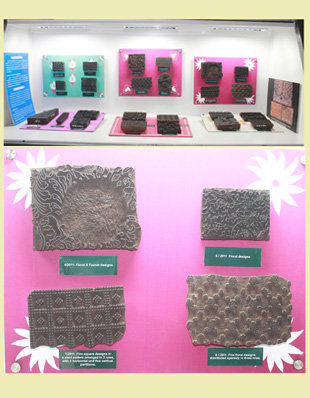
Block printing method
Dye blocks are used to print textiles. It is applied on all fabrics on which a pattern is produced subsequent to the weaving of the cloth, by the application of dye stuff or pigment to the surface of the fabric.
This is done in various ways:
By the direct or application process:
This implied the use of the wooden block directly on the fabric. This is commonly known as the Block printing method.
By the resist or indigo process:
This method involves covering or impregnating certain portions of the cloth which are intended to be kept in the background colour with wax, clay, gum, resin or other resist so that when the cloth is subsequently dyed, the colour does not penetrate the portion that has been previously impregnated with the resist, which produces the required pattern. Block printing may be subsequently carried out, after the cloth has been dyed and the resist removed on to the portions of the cloth, which have retained their original colour. The resist substance can be applied by brush or kalam by block or by hand.
By the mordant or madder alizarin process:
In this method the cloth is prepared with various mordants prior to the use of the dye. When the cloth is then immersed in a dye bath, a chemical reaction of the dye on the mordant produces different colours on the cloth.
Only those portions which have been prepared take the dye. Various shades are produced by the variable use of the mordant. The dye and the mordant can be applied both by brush and by block. These types of painting are practiced in India. Direct or block printings are the processes in which silk, rayon and cotton cloths are used as the basic materials.


